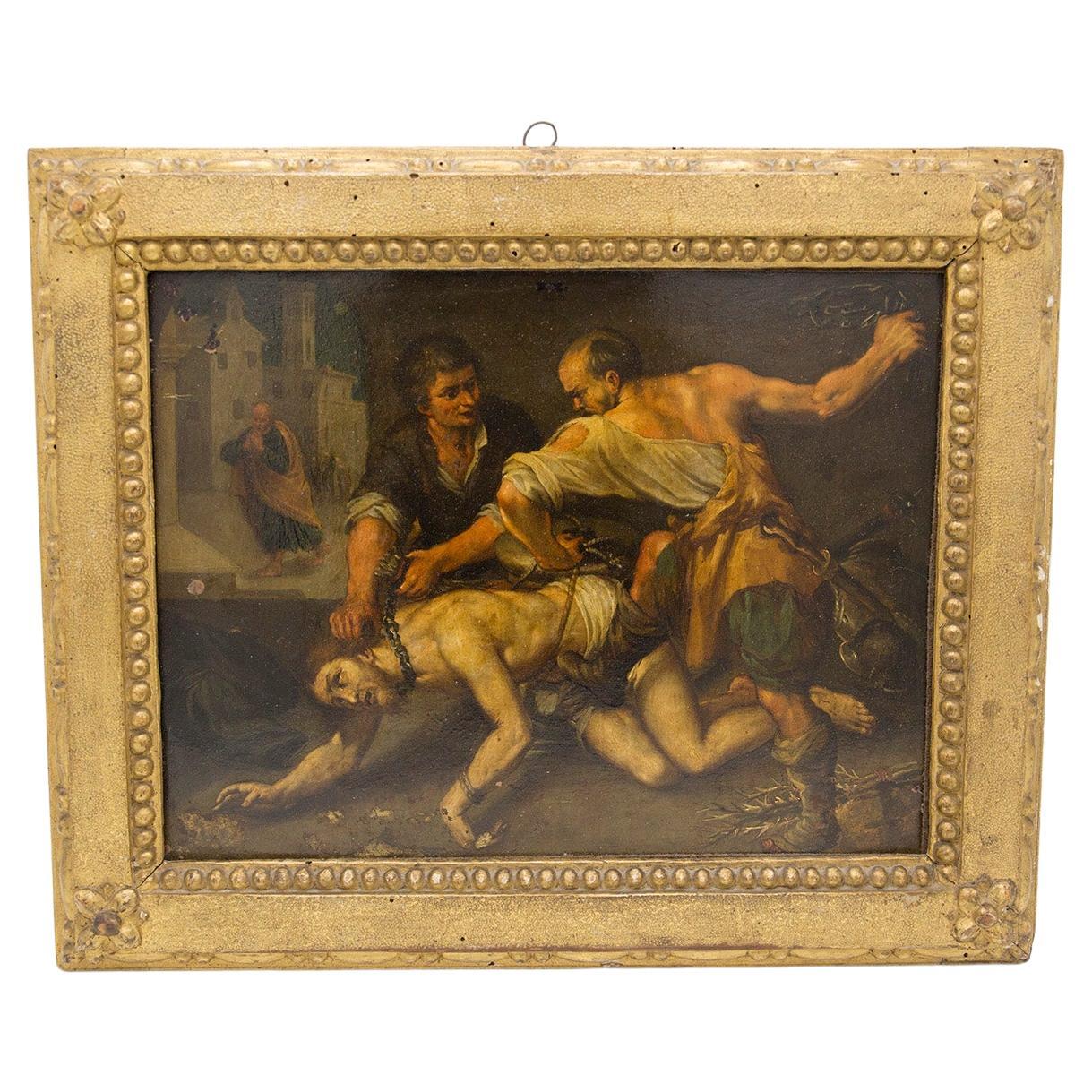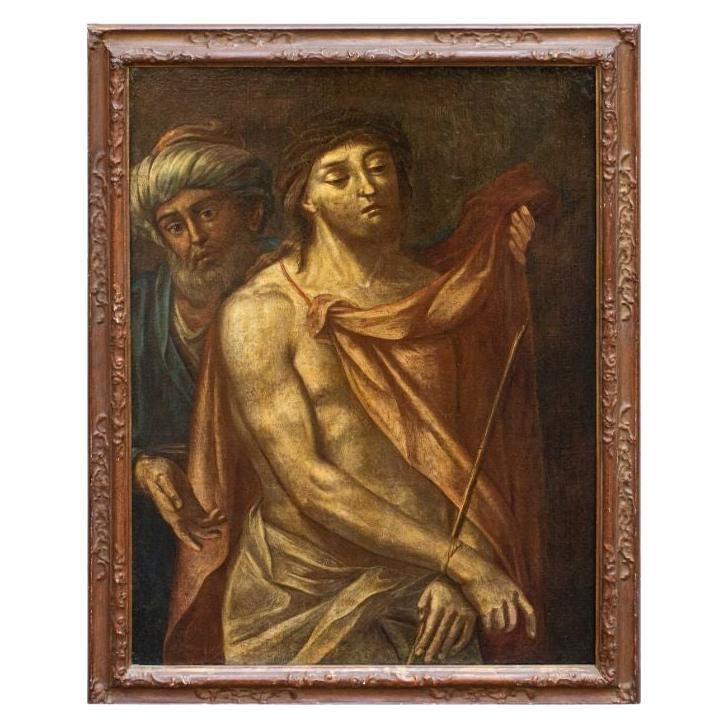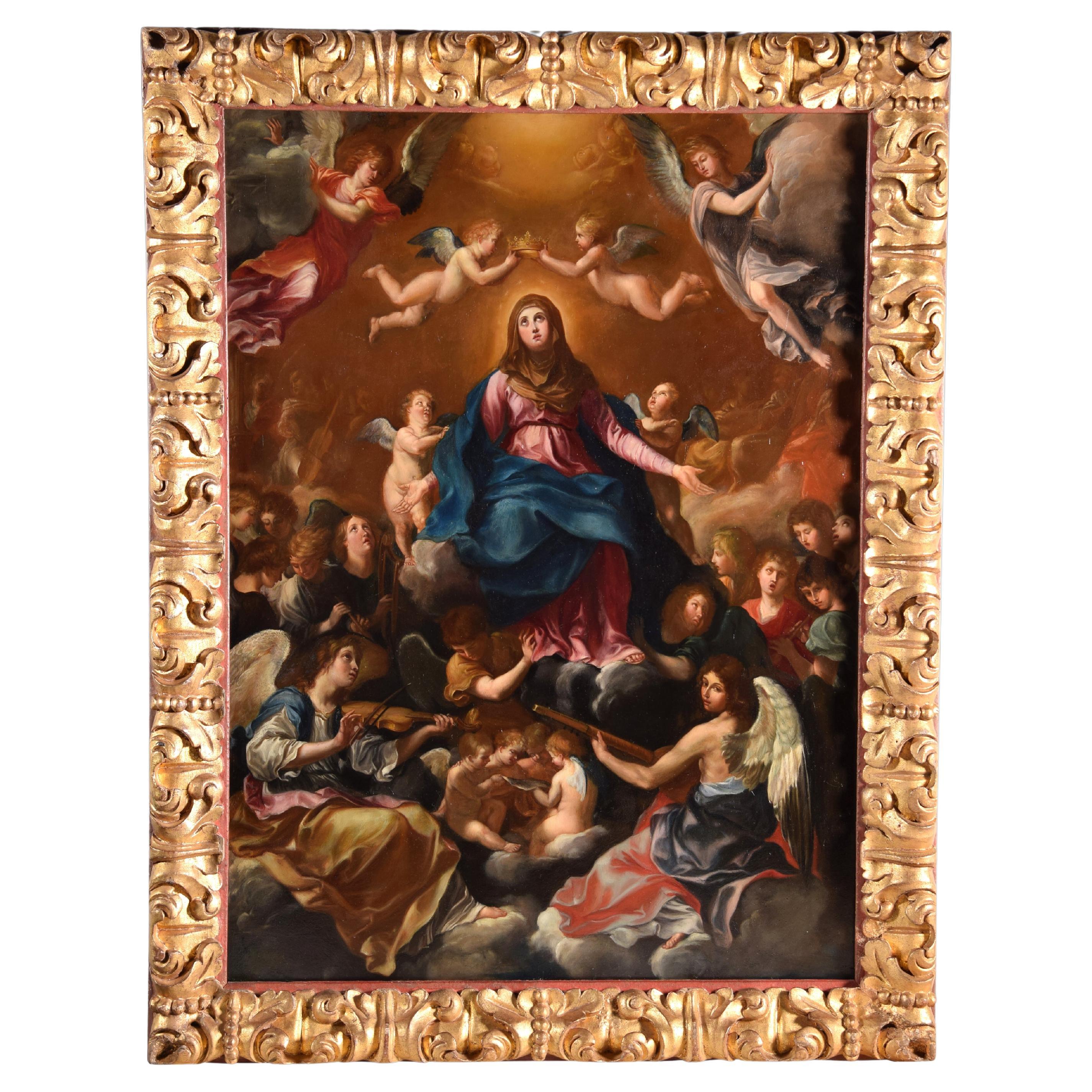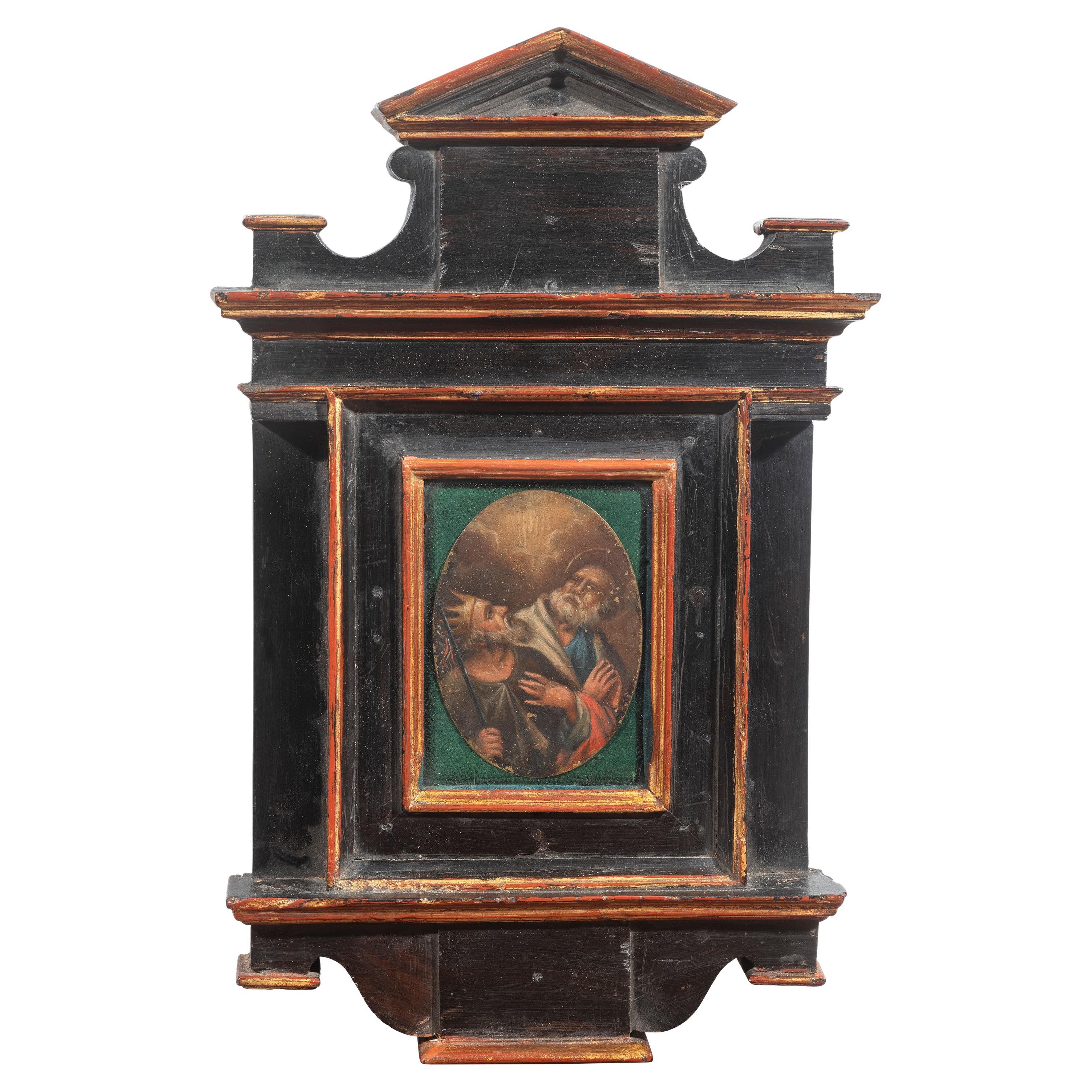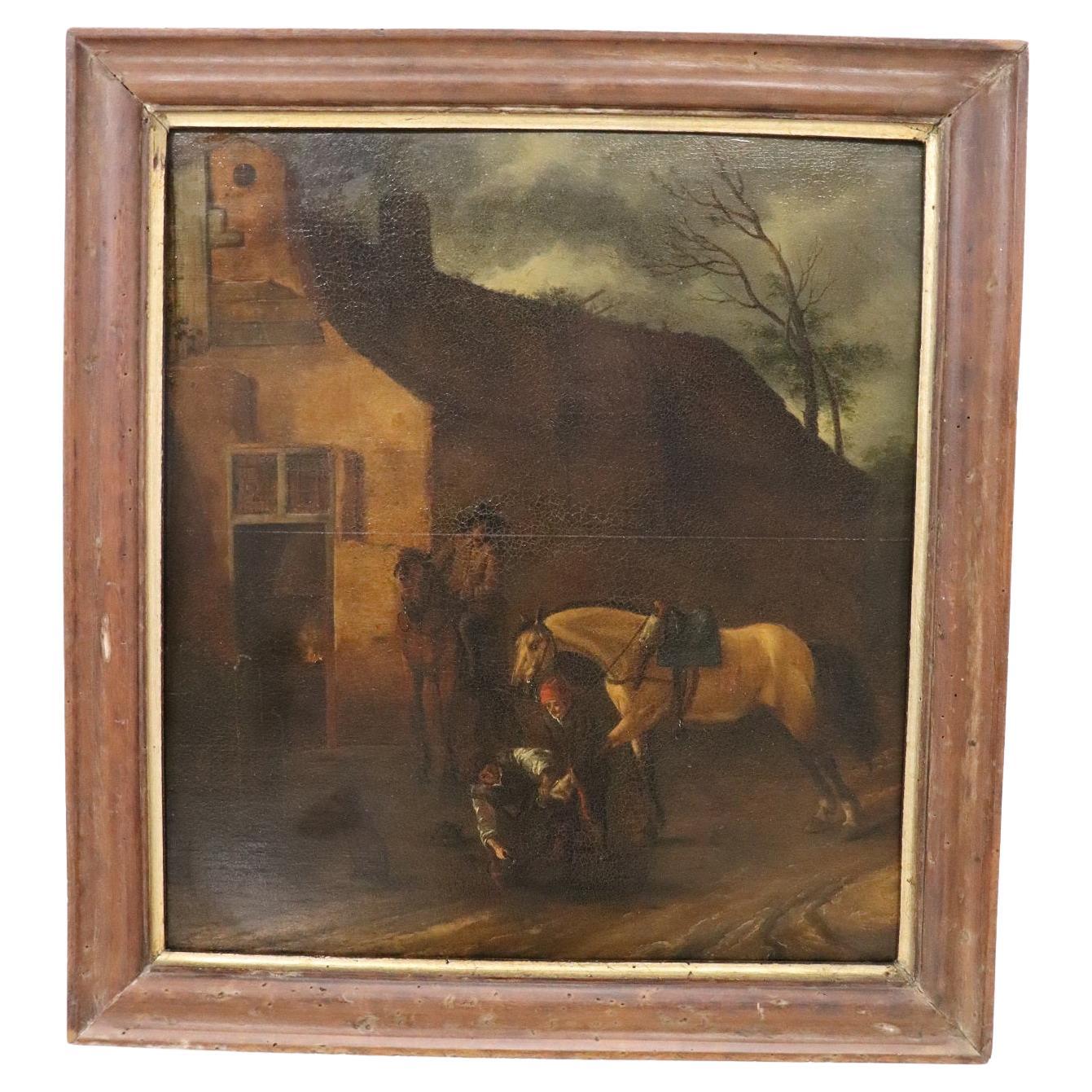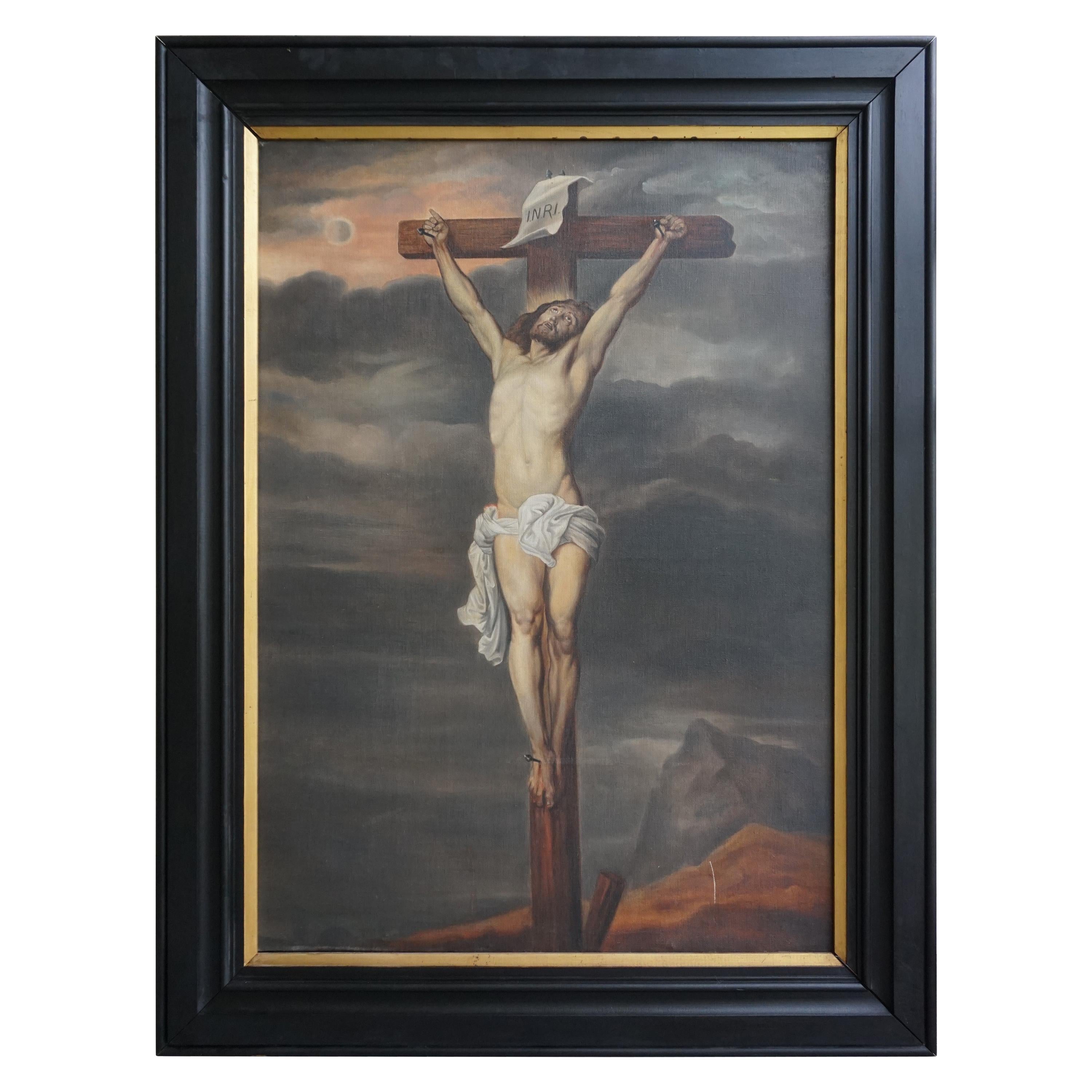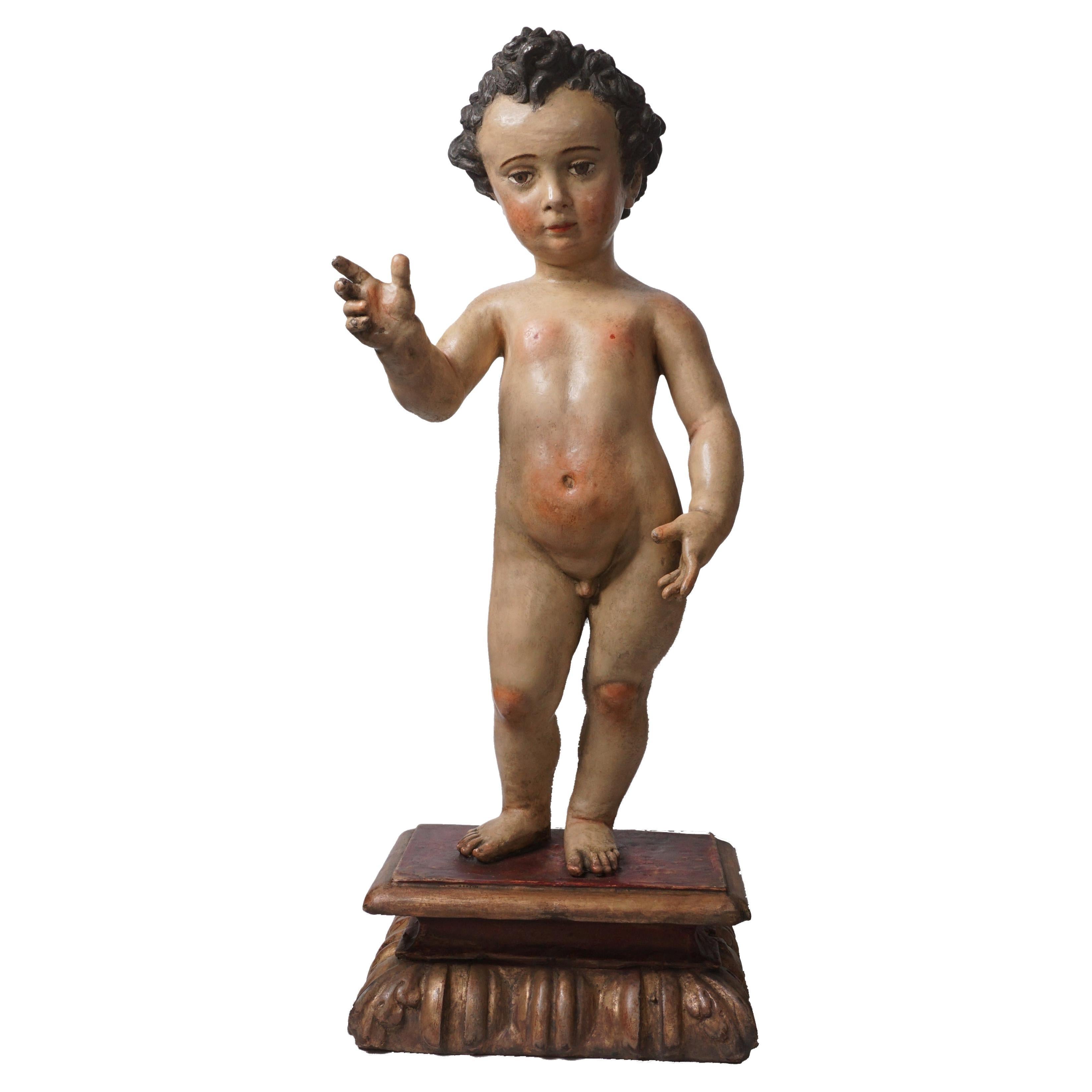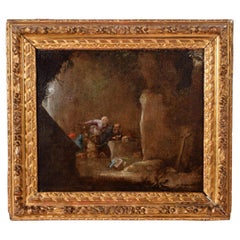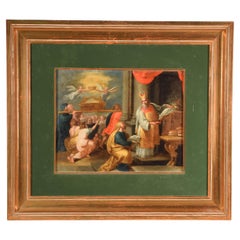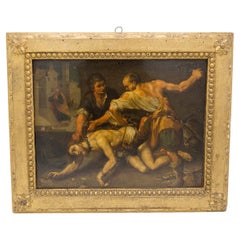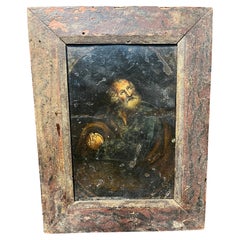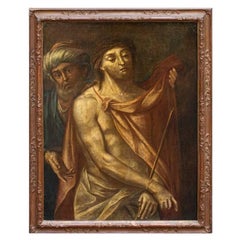
Christ Carrying the Cross, Oil on Copper, 17th Century
View Similar Items
Want more images or videos?
Request additional images or videos from the seller
1 of 5
Christ Carrying the Cross, Oil on Copper, 17th Century
About the Item
- Dimensions:Height: 14.97 in (38 cm)Width: 13.39 in (34 cm)Depth: 3.15 in (8 cm)
- Style:Baroque (Of the Period)
- Materials and Techniques:
- Place of Origin:
- Period:
- Date of Manufacture:17th Century
- Condition:Wear consistent with age and use. Minor losses. Minor fading.
- Seller Location:Madrid, ES
- Reference Number:Seller: Z62671stDibs: LU2951325200142
About the Seller
4.9
Vetted Seller
These experienced sellers undergo a comprehensive evaluation by our team of in-house experts.
Established in 1985
1stDibs seller since 2017
292 sales on 1stDibs
Typical response time: 16 hours
More From This SellerView All
- Assumption of the Virgin Mary. Oil on Copper Possibly late 17th centuryBy Guido ReniLocated in Madrid, ESAssumption of the Virgin Mary. Oil on Copper Possibly late 17th century Following models by Guido Reni (Bologna, 1575-1642). Has faults. Oil on copper that shows the Virgin Mary seated on clouds...Category
Antique Late 17th Century Spanish Baroque Paintings
MaterialsCopper, Other
- The temptation of St Anthony. Oil on canvas. 17th c., after David Teniers IIBy David Teniers the YoungerLocated in Madrid, ESTemptations of San Antonio Abad. Oil on canvas. 17th century, following the model of David Teniers II (Antwerp, 1610-Brussels, 1690). Oil on canvas showing a figurative scene located inside a cave. To the right, you can see a cross standing, supported; to the left, a hut; and in the center of the painting appears an elderly, bearded man, leaning on a table on which there is a ceramic jug and a skull, with an open book at the foot of it. The man looks towards a woman, who points to something outside, and appears accompanied by a large frog and a series of ghostly beings or monsters dressed in brightly colored cloth and clothing. San Antonio Abad or Antonio Magno (251-356) was a Christian monk, considered the founder of the eremitical movement. He was tempted numerous times by the devil while he was in the desert, becoming a subject frequently represented in art (as can be seen in this oil painting). He is represented in a black habit because the Order of the Knights of the Hospital of San Antonio (Hospitals) was placed under his patronage, being the color of the habits of the members of this order (the tau or Egyptian cross was also the symbol chosen by they). David Teniers II or El Joven was a prominent Flemish painter and engraver, son of David Teniers El Viejo or I and father of David Teniers III, much appreciated at the time for his scenes of villagers and common people, his paintings of monkey painters, etc. . He dealt with the theme of the Temptations of Saint Anthony...Category
Antique 17th Century European Baroque Paintings
MaterialsOther
- Sacrifice of the Mosaic Law. Oil on copper. 17th century, after RUBENS.Located in Madrid, ESSacrifice of the Mosaic Law. Oil on copper. 17th century, inspired by RUBENS, Pedro Pablo (Siegen, 1577-Antwerp, 1640). Oil on panel showing a figurative scene located in a building...Category
Antique 17th Century Spanish Baroque Paintings
MaterialsCopper, Other
- Christ with angels. Possibly Flemish school, 17th century.Located in Madrid, ESChrist with angels. Oil on copper, ebony frame, textile. Possibly Flemish school, 17th century. Oil painting on copper enhanced with a textile strip that also presents an ebony wood...Category
Antique 17th Century European Baroque Religious Items
MaterialsCopper, Other
- Gathering of Manna, Oil on Canvas, 17th CenturyLocated in Madrid, ESJews in the desert collecting the Manna. Oil on canvas, XVII century. Oil on canvas arranged horizontally in which a figurative theme is shown with a mountainous landscape in the ba...Category
Antique 17th Century Spanish Baroque Paintings
MaterialsOther
- Devotional Pendant, Oil on Aventurine, Gold, Enamel, Spain, 17th CenturyLocated in Madrid, ESDevotional pendant or reliquary. Oil painting on aventurine, enamel, gold. Spain, 17th century. Medallion or devotional pendant or reliquary made of aventurine or aventurine with an octagonal shape and faceted fronts, enhanced with a series of enamels combining black and gold, which protect two oil paintings with a Catholic Christian religious theme, located one on each side of the piece. Protected, you can see a very particular Virgin with Child for being inspired by the Icon of the Madonna del Popolo (Rome, Italy), and a simplified Martyrdom of San Lorenzo (the saint, the grill and an angel with a crown and the palm corresponding to the subject). The edges of the piece have been protected with simple metal elements. The painting of San Lorenzo follows a common composition in the Spanish school, and would recall works such as the painting of the main altar of the Church of San Lorenzo de Huesca, for example, but also others such as the engraving by Marcantonio Raimondi (executed around 1527) in some details. The so-called icon of the Madonna del Popolo was well known for being considered as made by Saint Luke, and was brought to the church of the same denomination by Gregory IX from the Sancta Sanctorum of the Lateran Palace after a flood caused a terrible plague in the city and through a solemn procession with the image of Santa Maria del Popolo. Regarding the material of the piece, a certain type of glass and a type of quartz (which can be green or reddish-brown, and usually has tiny elements of yellow mica that give it golden reflections) is known as aventurine or aventurine. In the first case, it is known that “aventurine” or “stellaria” appears mentioned in the Murano workshops for the first time during the first quarter of the 17th century, in reference to a very complicated production paste (it is said that the name comes from of this circumstance, that is, that its creation was due to luck or luck) that imitates the effects of that stone (from India and Russia at that time) thanks to the inclusion of copper particles, and that it was used as if out of stone (cut) given the complexity of its use in blowing (practically impossible). And, dealing with this material, it is necessary to mention “The Nativity” by Pietro da Cortona, dated around 1656, which is kept in the El Prado...Category
Antique 17th Century Spanish Baroque Religious Items
MaterialsGold, Enamel, Other
You May Also Like
- Caravaggesque Oil on Copper "Flagellation of Christ" Baroque Sicilian, 17th CentBy (After) CaravaggioLocated in Milano, ITSplendid 17th-century Italian painting by unknown artist, but certainly a follower of Caravaggio, relying on style and drawing. The painting has a very beautiful gilded wooden frame, with a subtle greek with spheres and an overlying rectangular frame with sinuous flowers on each corner, very elegant and beautiful. The painting depicts one of the most depicted religious scenes ever, the scourging of Christ, and is entirely done in oil on copper. The scourging of Jesus is an episode narrated in the Gospels (Mk15:15-16; Mt27:26-27; Lk23:16-26; Jn19:1-17[1]). Scourging is a flogging, particularly bloody, by means of sticks, rods or cat-o-nine-tails, the latter instrument consisting, in the Roman typology, of a short stick to which were secured several strings ending in metal claws, leads and bone splinters that caused tremendous lacerations and fractures to the tortured person. Chains are used in this scene, both to immobilize Jesus Christ and to flog him, as we can see in the upper right hand of the scourger. According to some personal research, it turned out that the actual scourging of Christ was mostly depicted at the column, while this Christ is on the ground, so presumably Christ here is scourged during the Way of the Cross at one of those stages where he fell. The painting has a very dark coloring, which is why this painting is believed to faithfully follow Caravaggio's style of dry, authoritarian brushstrokes. The painting shows a figure agonizing on the ground that continues to receive beatings and floggings of all kinds, representing Christ; his face is crucified in a loquacious expression of pain, he turns his eyes to heaven as if to invoke God, but at the same time those same eyes admonish the wickedness and arrogance inherent in humanity. Christ has one hand resting on the ground in the act of holding himself, while the other takes a completely unnatural stance against the barren ground. His body appears hardened to wanting to parry the blows, his legs are curled up on his knees as he takes kicks from the soldier above him. Christ is depicted pinned down from the neck with a very large and strong black iron bolt held by the other soldier. The soldier on the right in the foreground wears a one-shoulder tunic with an orange tunic and blue pants. On his feet he wears gray shoes, at his waist he has a belt with an iron helmet...Category
Antique 17th Century Italian Baroque Paintings
MaterialsCopper
- Spanish 17th Century Oil on Copper PaintingLocated in Atlanta, GAA wonderful 17th century oil on copper painting from the Catalan region of Spain housed in a beautiful frame of painted wood. The painting depicts a saint or a religious man...Category
Antique 17th Century Spanish Paintings
MaterialsCopper
- 17th Century Christ in Chains Painting Oil on CanvasLocated in Milan, IT17th century Christ in chains Oil on canvas, 95 x 71 cm Frame 110 x 84 cm The figurative tradition representing Christ with chained hands can be traced back to the early Middle Ages, when an iconography of His pains spread widely. The need to translate the Passion into images aimed to raise awareness of the forgiveness that has occurred for all men, consequent to the Crucifixion. This painting depicts the moment before the audience before Pilate. Christ has not yet been cruelly mocked by the soldiers, despite the fact that he is already wearing the crown of thorns and the purple...Category
Antique 17th Century Italian Paintings
MaterialsCanvas
- 17th Century Oil on Copper Saint Joseph and King DavidLocated in Firenze, ITSHIPPING POLICY: No additional costs will be added to this order. Shipping costs will be totally covered by the seller (customs duties included). Miniature on copper...Category
Antique Mid-17th Century Italian Baroque Paintings
MaterialsCopper
- 17th Century Spanish Boxwood Christ on the CrossLocated in Marbella, ES17th century Spanish boxwood Christ on the cross.Category
Antique 17th Century Spanish Renaissance Religious Items
MaterialsBoxwood
- 17th-18th Century Jesus with the Cross, Unsigned, Oil on Canvas Laid on WoodLocated in Virum, DKJesus with the cross wearing the crown of thorns, verso portait of Jesus wearing the crown of thorns. Unsigned. Oil on canvas laid on wood. 134 × 76 cm. Unframed.Category
Antique Mid-18th Century Italian Paintings
MaterialsCanvas
Recently Viewed
View AllMore Ways To Browse
Spanish Xvii
Religious Paintings On Copper
Christ Carrying Cross
Portuguese Baroque Furniture
Portuguese Baroque
Gothic Revival Church
Antique Mexican Colonial Furniture
Crosses With Christ
Carved Wooden Religious
Antique Collectible Safes
Small Antique Silver Collectables
Antique Bible Used
Old Religious Items
Antique Furniture Pick Up
Iron Money
Christ Passion
Passion Of Christ
Hand Carved Christ
